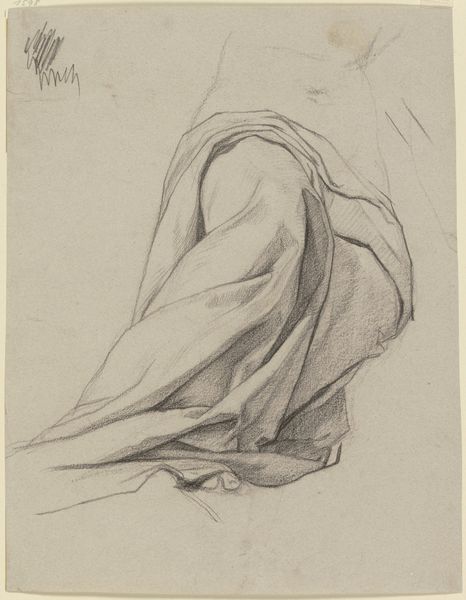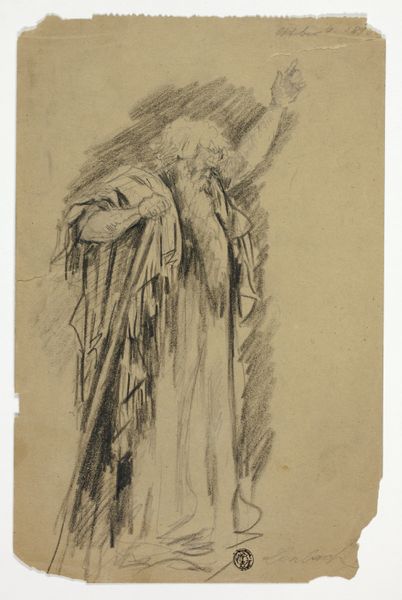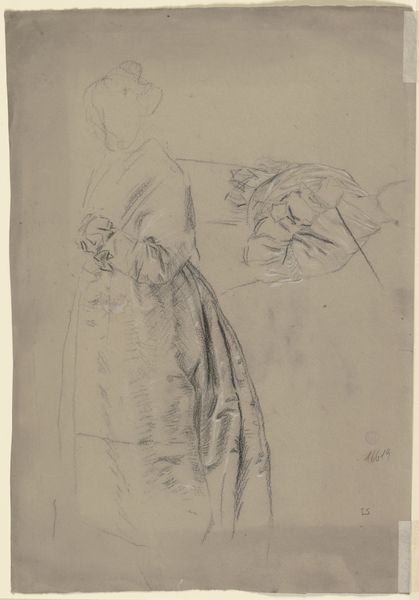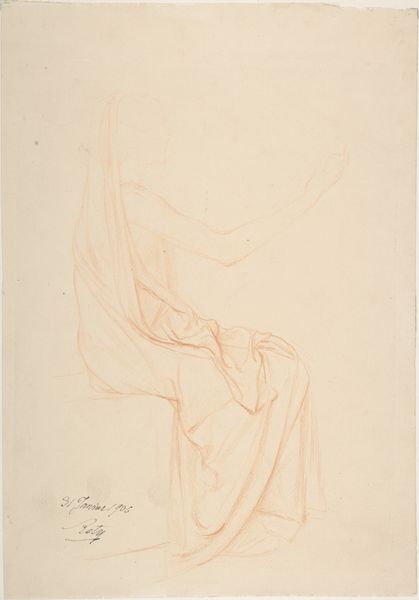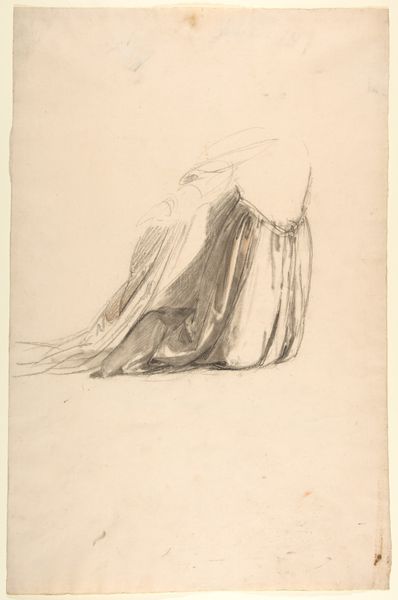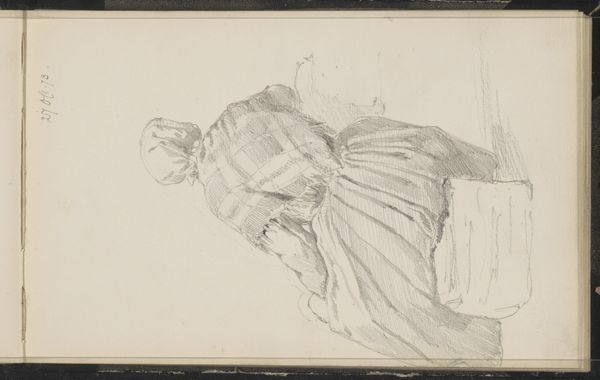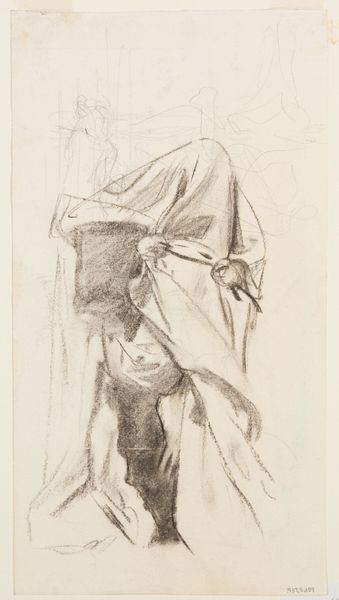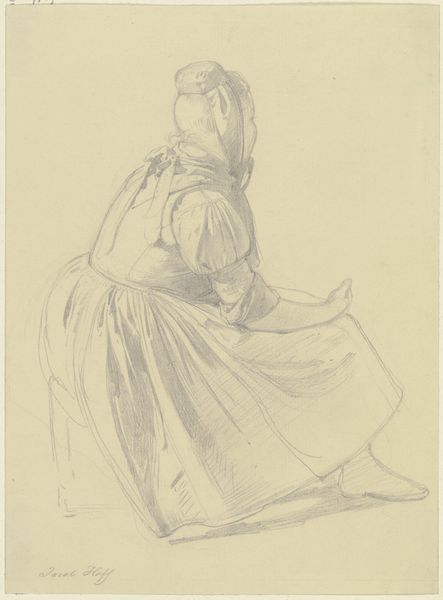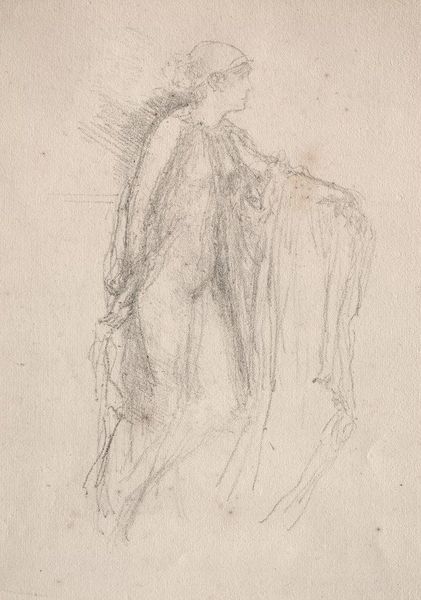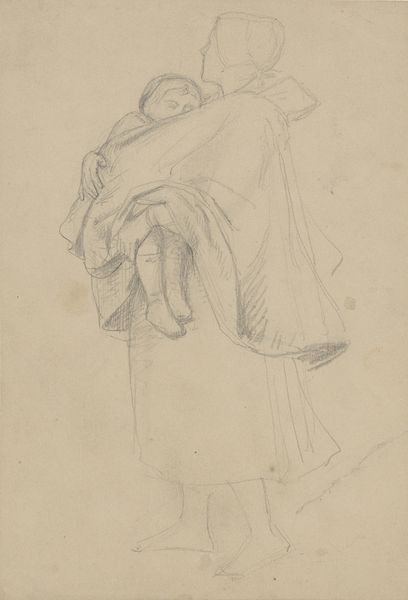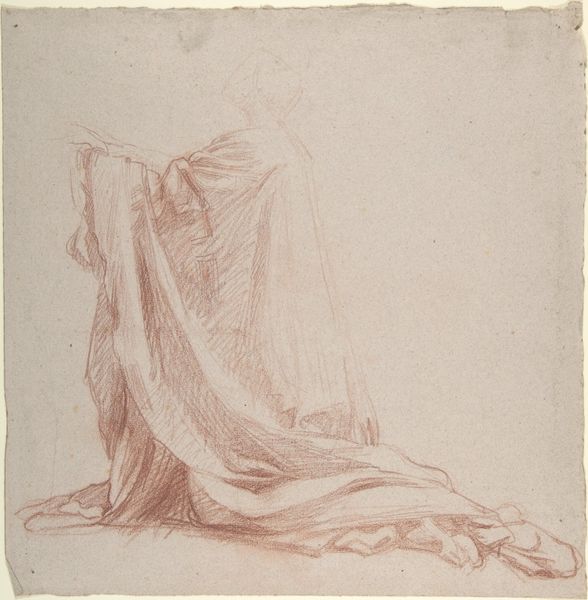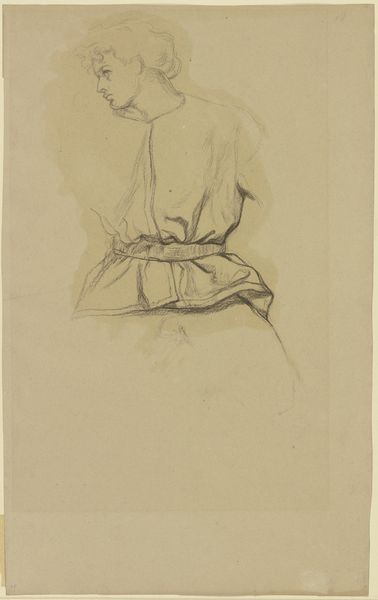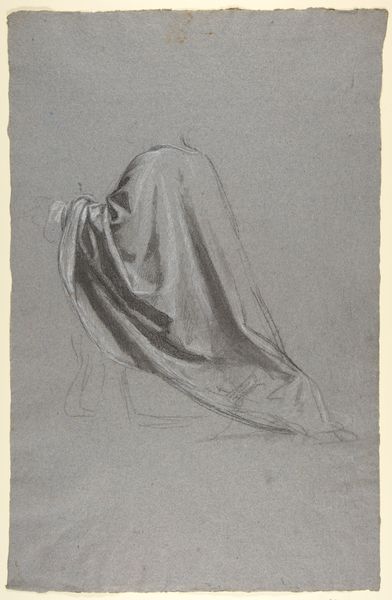
Bending Female Figure, study for Mirror of Venus c. 1873 - 1877
0:00
0:00
Dimensions: 253 × 178 mm
Copyright: Public Domain
Editor: Here we have Edward Burne-Jones's "Bending Female Figure, study for Mirror of Venus," dating from around 1873 to 1877. It's a graphite drawing on paper. There's a dreamlike quality to the lines, especially in how they define the draped fabric. What do you see in this piece from a formalist point of view? Curator: Focusing on form, I observe Burne-Jones' masterful handling of line and value to create a sense of volume. Note the rhythmic repetition of vertical lines in the drapery. They not only suggest fabric but also establish a compelling visual rhythm. Also consider how the negative space around the figure contributes to the overall composition; it’s almost as important as the figure itself. Editor: It’s interesting how the lines of the fabric lead the eye downward. Is that intentional, do you think? Curator: Undeniably. It draws attention to the formal arrangement of shapes and the interplay of light and shadow, fulfilling its role in guiding our perception. Moreover, the preparatory nature of the sketch is very interesting to the composition, where the figure slowly emerges from the ground as lines begin to appear to clarify massing, posture, and overall design. What effect is produced? Editor: It emphasizes the artistic process. By paying attention to these purely formal decisions, you gain an interesting access to the method of the artist. I was focused on how "pretty" it was initially! Curator: Precisely! Disengaging the subject to expose elements of shape, form and structure provide different avenues to interpretation. This gives the drawing dynamism which is important given its incomplete status. Editor: Thanks for illuminating those formal aspects. It's definitely reshaped how I see the drawing. Curator: Indeed. The beauty resides not just in the representation but in the artistic decisions which determine structure.
Comments
No comments
Be the first to comment and join the conversation on the ultimate creative platform.

